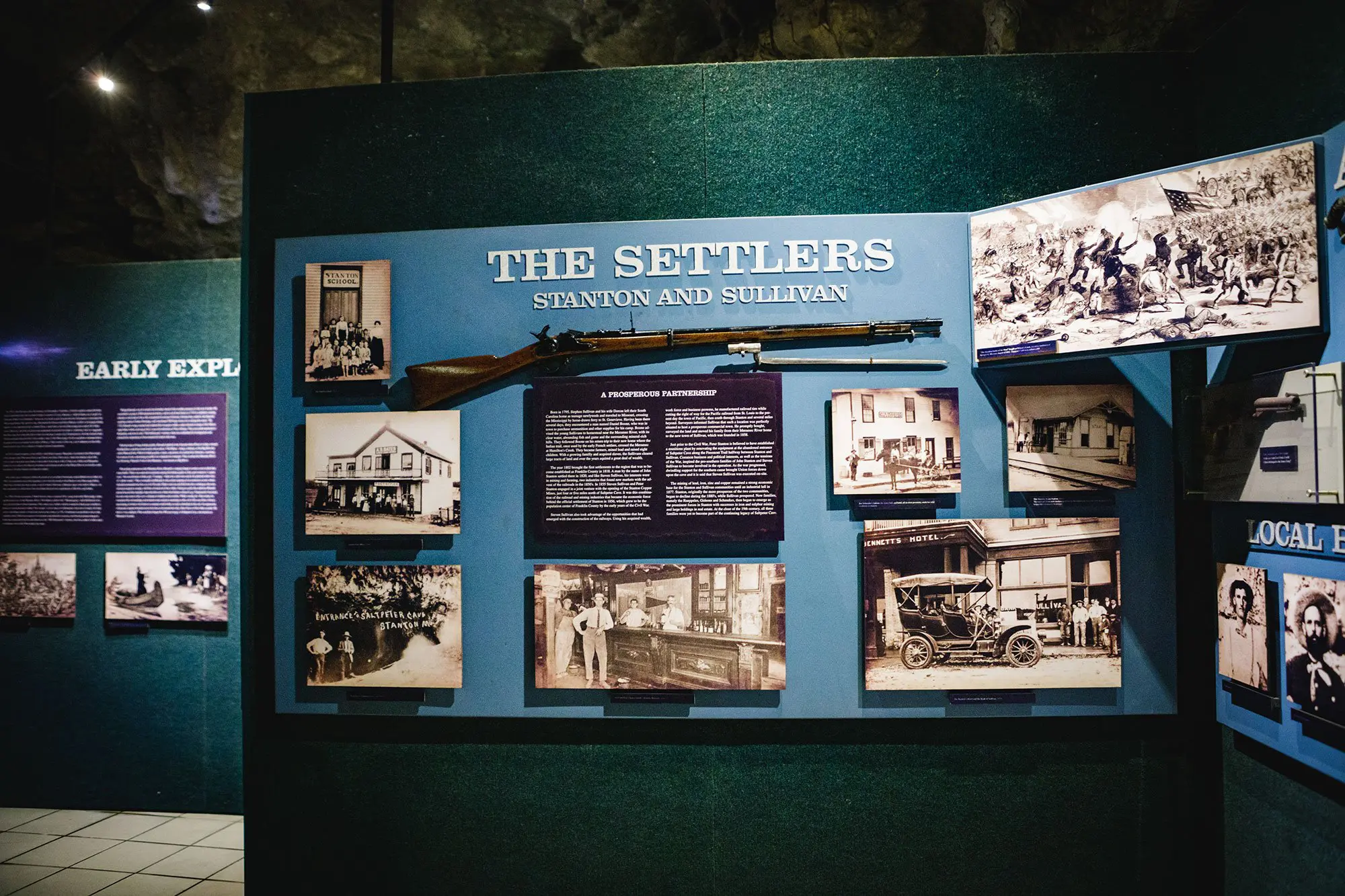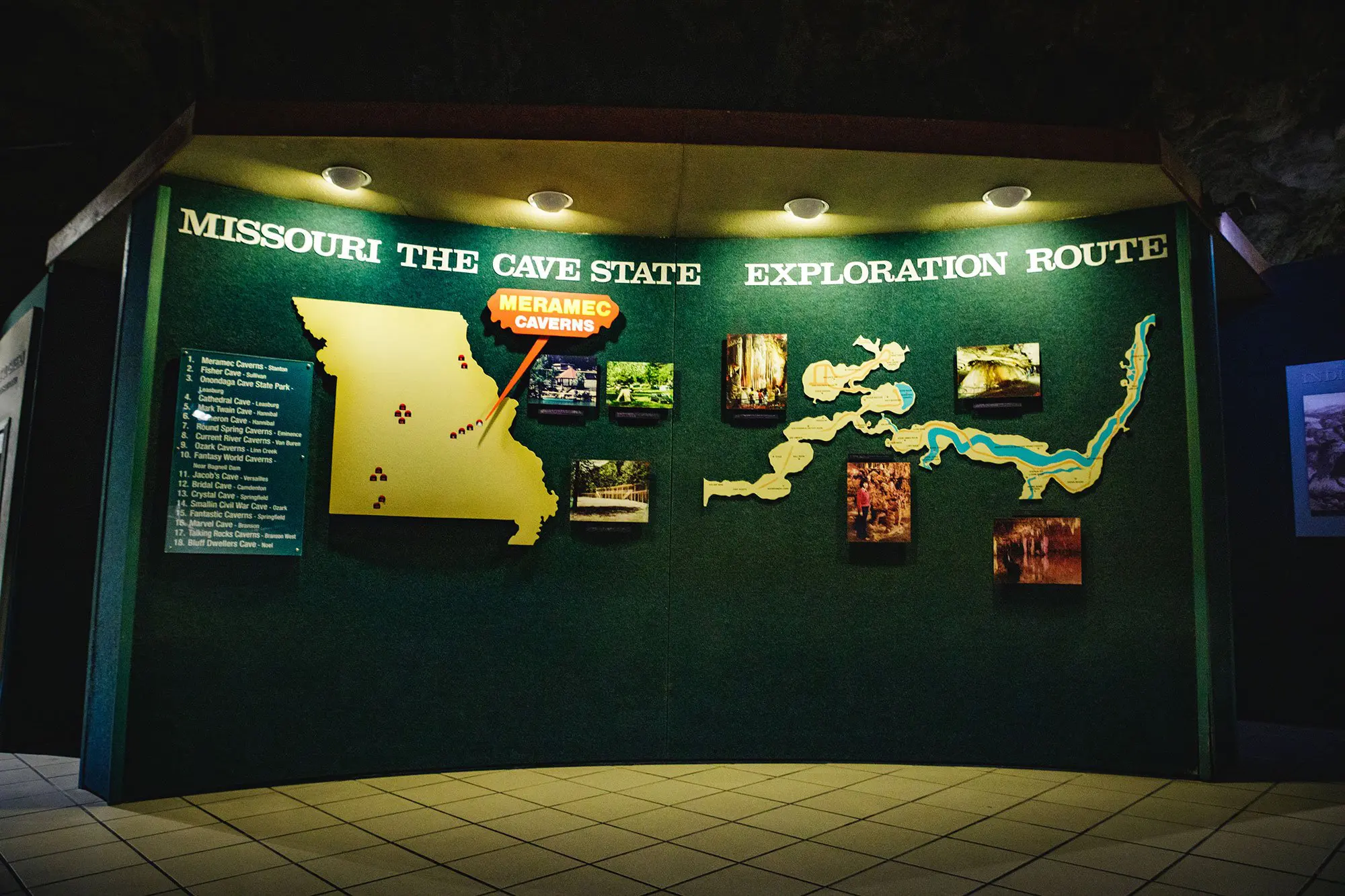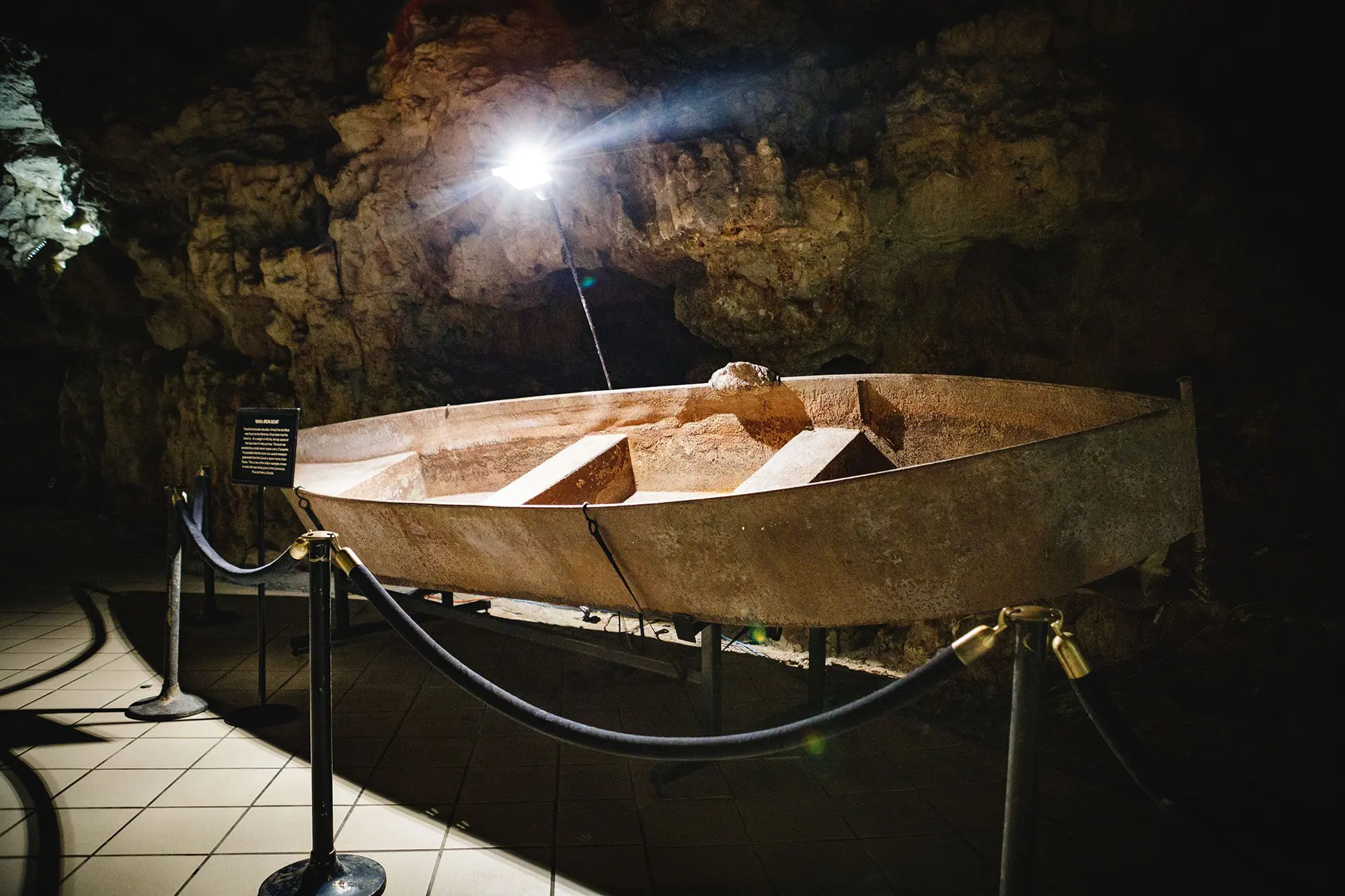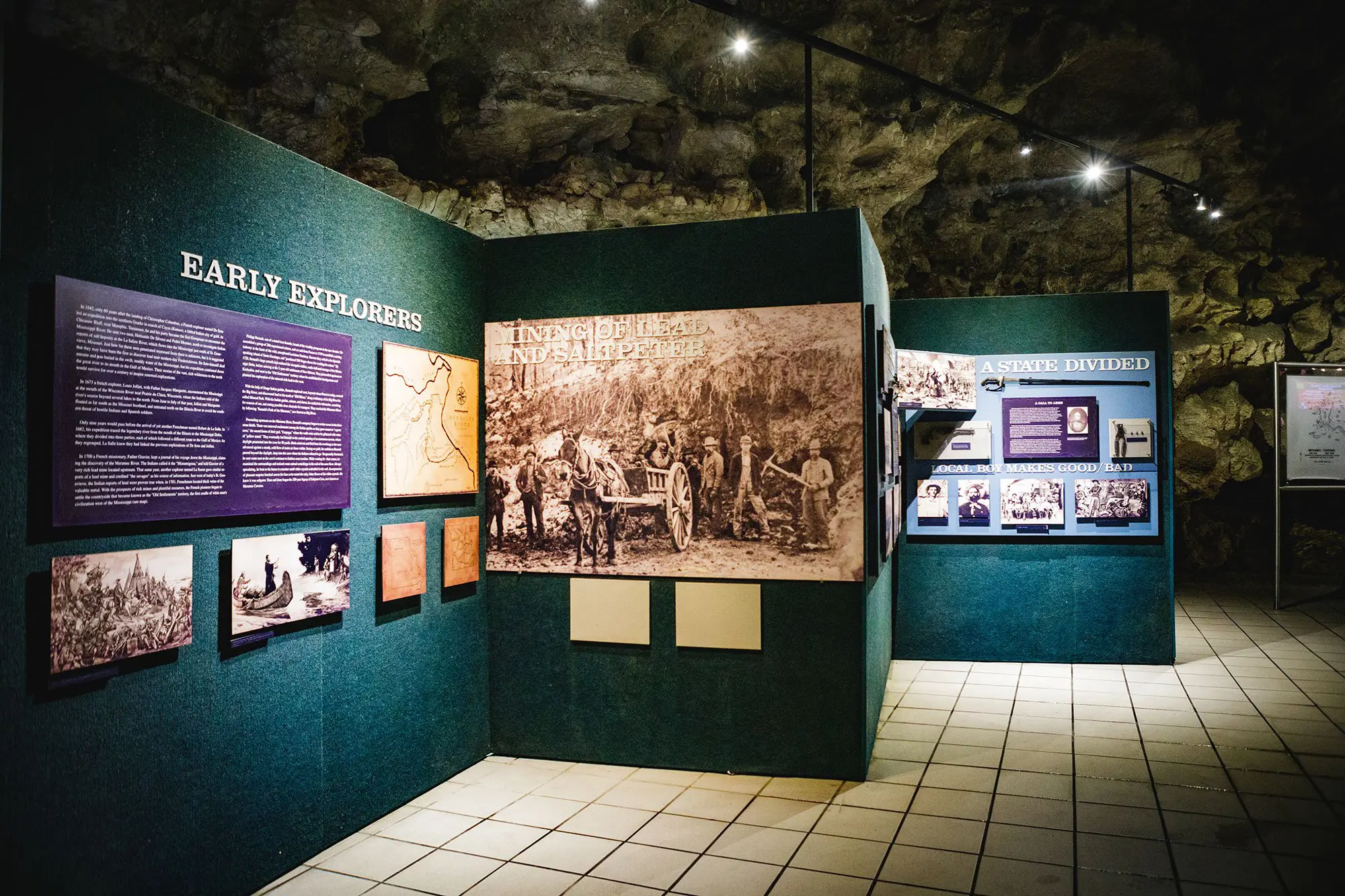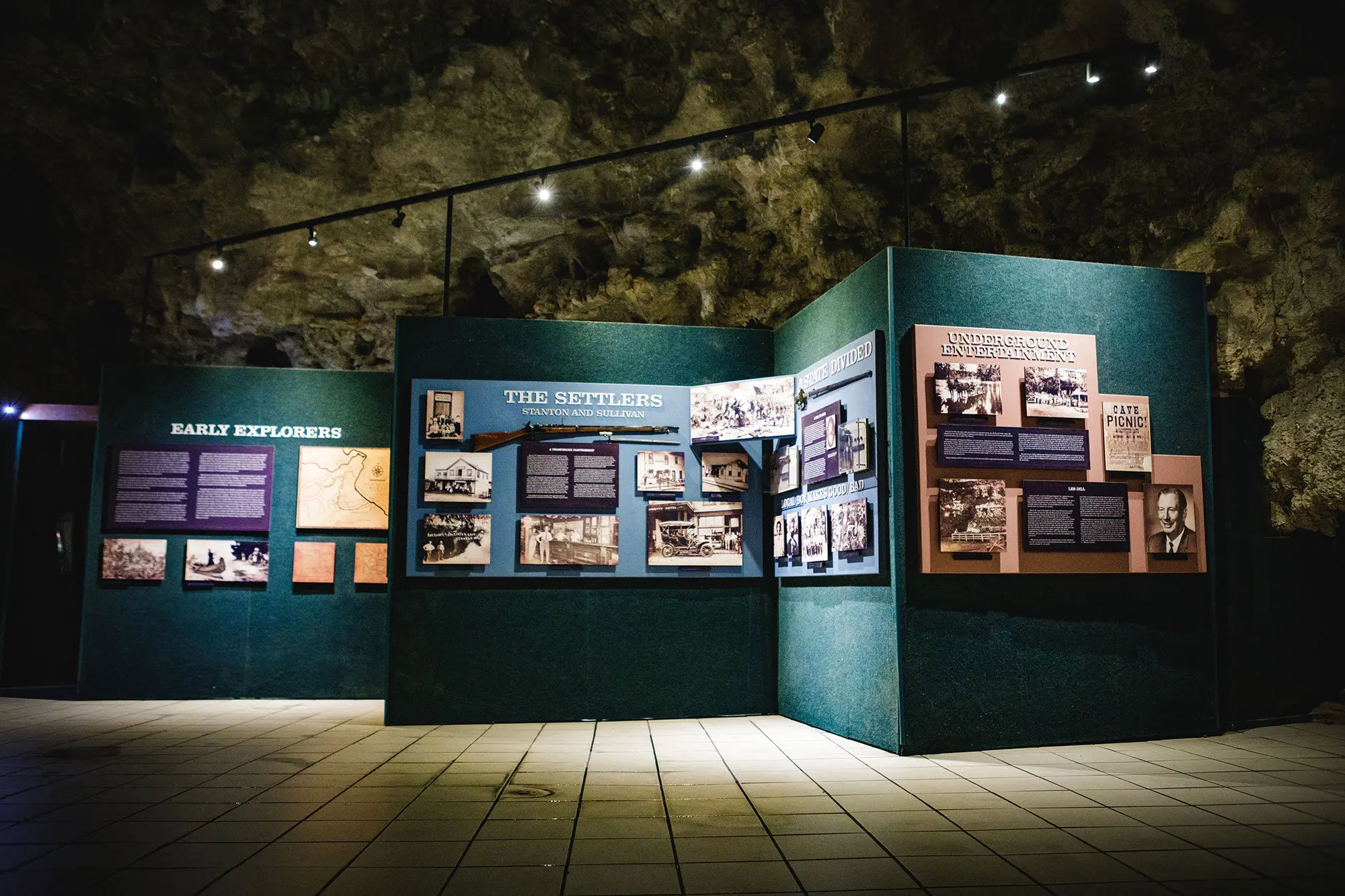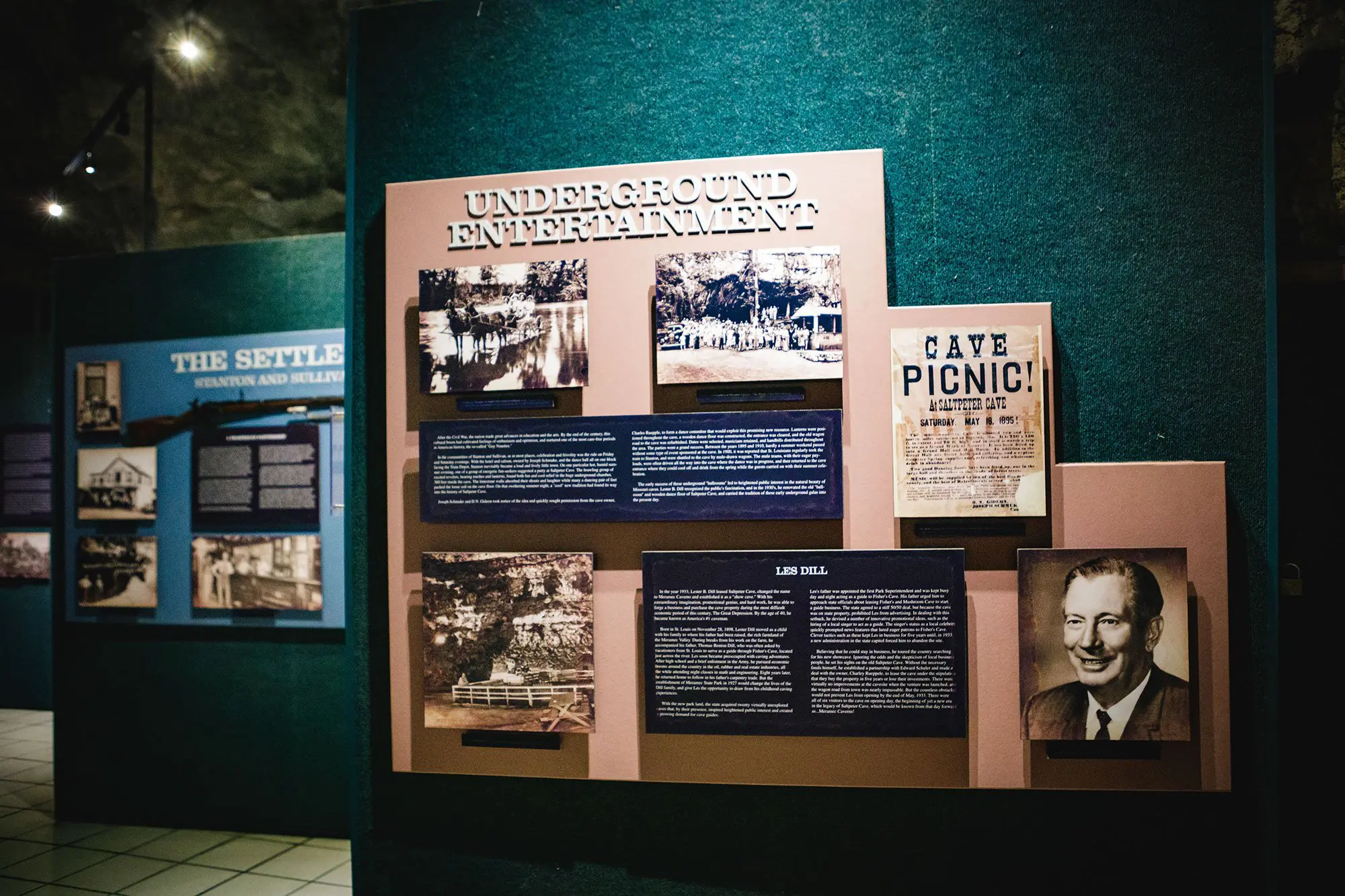Discover the history of the Caverns
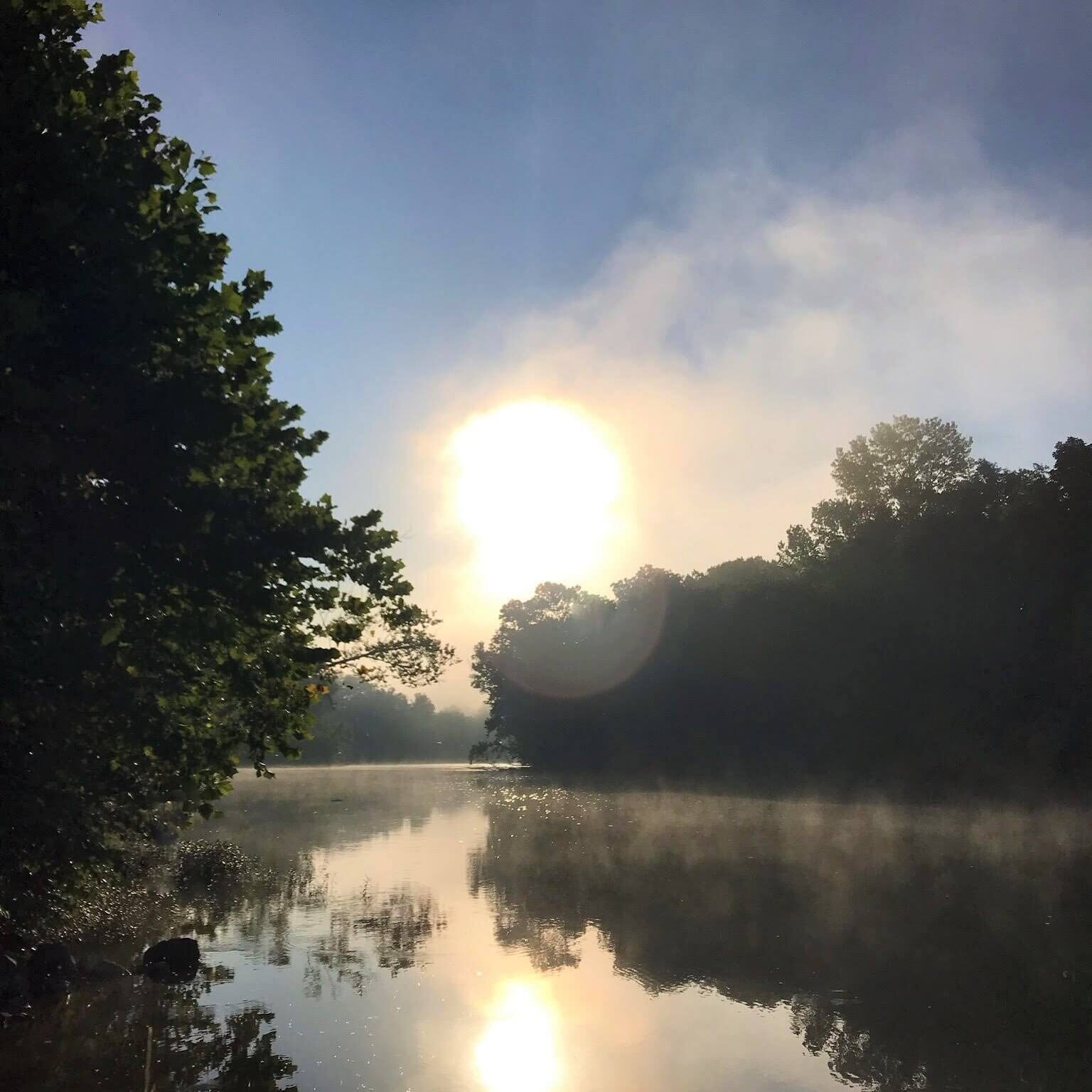
The Meramec River cut gently through its beautiful and mostly unexplored bluffs, as a small boat emerged from the fog carrying a few men, an Osage Indian guide, and French explorer Philipp Renault. The year was 1720 and Philipp Renault was drawn to this area by Osage Indian legends. The Osage told Renault of a gigantic hole in the earth they would use for refuge when they were caught in extreme weather. The 'natives' also claimed along the walls of the cave were 'veins of glittering yellow metal', which captured the Frenchman's attention.
As the boat reached the shore, Renault could immediately see what the Indians had told him. In front of the boat, just off the riverbank, the men of the Expedition party saw a gaping 50 feet wide and 20 feet high hole in the bluff. Philipp Renault had inadvertently discovered the largest cave west of the Mississippi, but, inside the cave, it wasn't gold he discovered as the Native Americans' legend had promised, it was saltpeter. Renault eventually named the cave, Saltpeter Cave, after the abundance of the mineral.
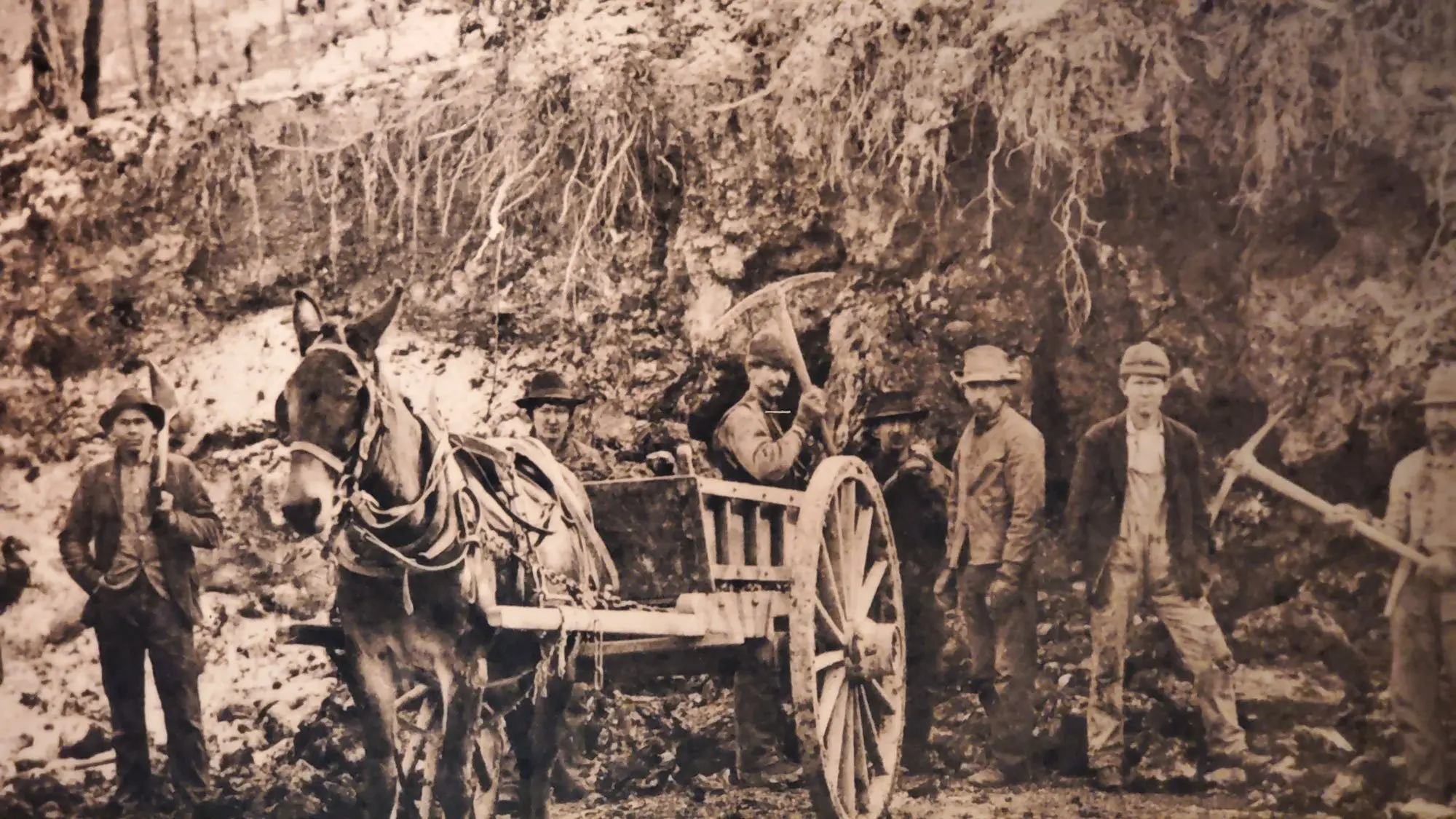
Saltpeter, or potassium nitrate, was a key ingredient for the manufacturing of gunpowder at that time, and Renault's discovery launched 144 years of saltpeter mining from the cave that would be known, years later, as Meramec Caverns. The history of saltpeter in Meramec Caverns ties directly to the history of the cave itself for years. Many disputes for control of the cave and its precious mineral would follow the 1720 discovery, all the way until the Civil War. In 1864, Confederate troops destroyed a Union-held gunpowder facility inside of the cave. In addition to bringing down the Union forces, the Southerners also brought an abrupt end to saltpeter mining in Meramec Caverns.
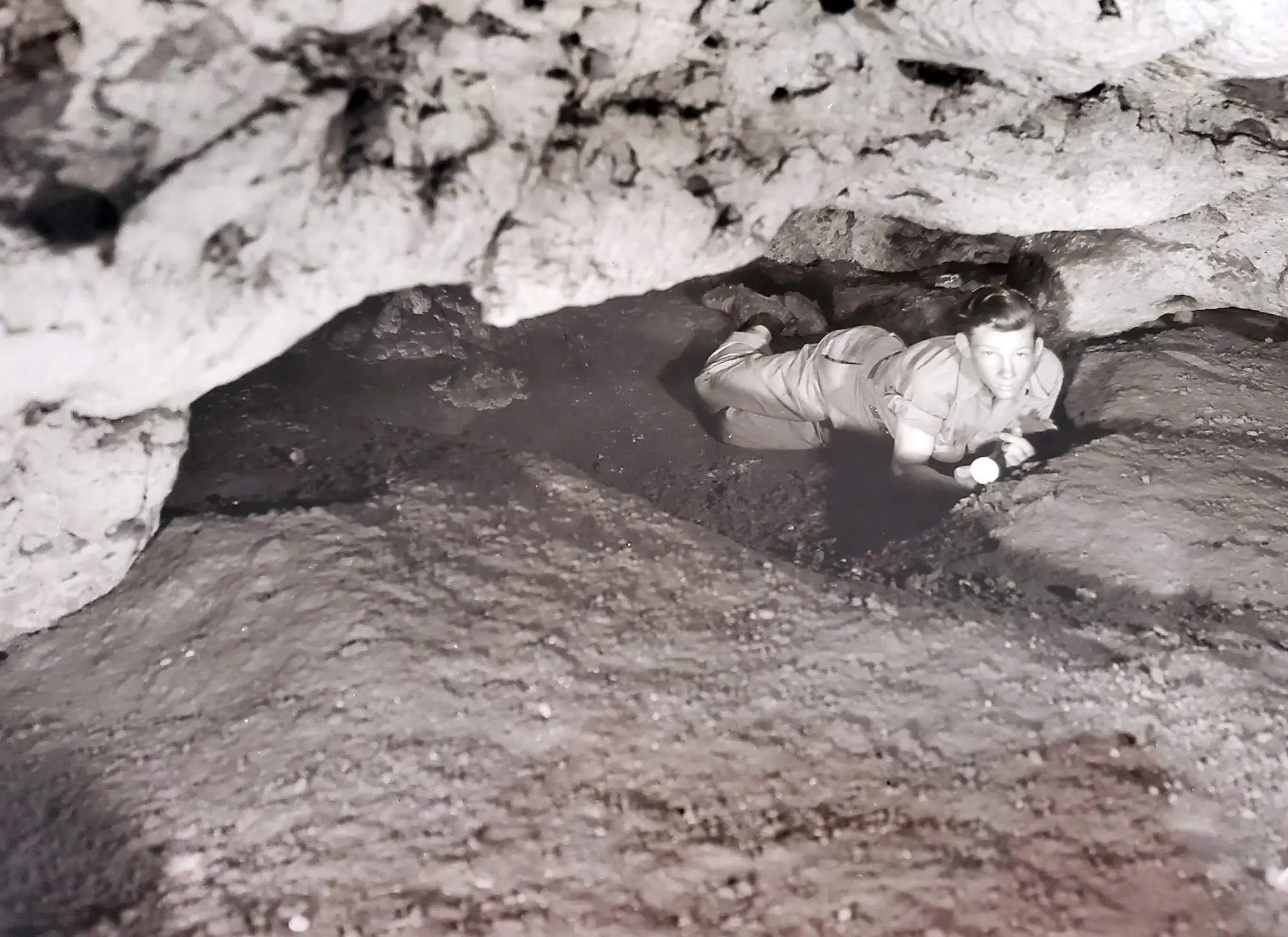
The 1890's brought a new era of human interaction to the cave. During that time, locals from Stanton, Missouri would hold 'cave parties' during summer months to avoid the extreme heat. Meramec Caverns was especially popular for these types of events, as a very large room lie just 300 feet inside the cave entrance. The room was large enough to accommodate big crowds, as well as a 50-foot by 50-foot dance floor in the center. This earned the room the nickname of the 'Ballroom'. In 1898 Charles Ruepple purchased Meramec Caverns, then known as Saltpeter Cave. He headed a dance committee along with other local men from Stanton. Dancing continued through the 1890's and spilled over into 1900, but it would be another 33 years before the most significant event in the cave's history…

Lester Benton Dill, born in 1898, spent the majority of his youth exploring caves in the Meramec River Valley. Les began his cave promotion days with a small cave in Meramec State Park, known as Fisher's Cave. Though Fisher's Cave was exciting to work with, Les wanted more, and in 1933 he approached Charles Ruepple about the prospect of purchasing his cave. Mr. Dill's sole interest in the cave was to develop it into a show cave and allow it to be entertainment for the public. Charles was reluctant at first, but soon agreed to sell the cave to Les. Les changed the name from Saltpeter Cave to Meramec Caverns and quickly began promoting and offering cave tours to the public.
In that same year, 1933, Les made a significant find. While inspecting the little portion of the cave he owned, Les noticed a small crevice in one of the cave walls. Climbing up to the crevice, he felt a small, cool breeze flowing through the opening. Les decided to shout into the hole in hopes of receiving his echo back from the other side. When the echoes of his shouts returned, he knew immediately there was more cave beyond the wall, but just how much he had no idea. After the wall had been removed, the additional cave found was ready to be explored.
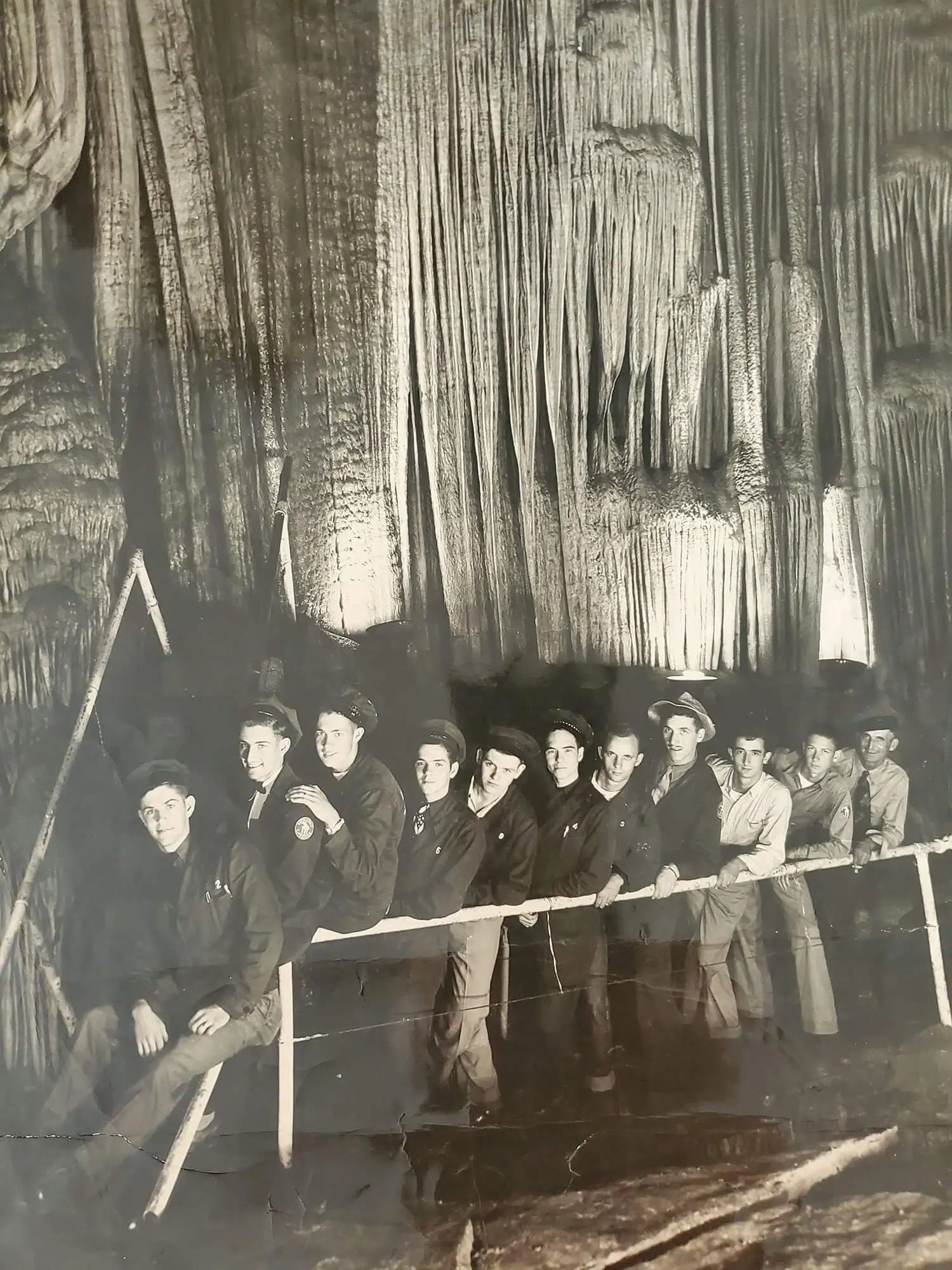
Among the numerous formations found in what were dubbed the 'upper levels', Les stumbled across what would become the cave's most prized possession. The 'Stage Curtain', as it has became known, stood before him, tall and proud. Standing nearly 70 feet tall, the 'curtain' was an impressive sight, and the room it stood in quickly became what Les Dill would build his show cave around, thus the 'Theatre Room' was born. Les enjoyed success for another 8 years before his next significant finding, one that would launch Meramec Caverns to international fame.
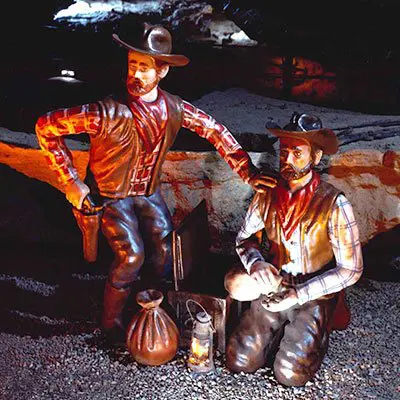
In the summer of 1941, Missouri was in the midst of a rather severe drought. A drought so intense, it not only dropped the rivers and streams above ground, but the water table itself also depleted. At that time, the main level of Meramec Caverns seemed to 'dead end' at a wall with a small pool of water spilling out below. With the drop of the water table, the pool of water below the wall receded nearly six inches and allowed a cool breeze to push into the cave between the wall's bottom and top of the water. Les Dill was alerted to this change by his cave guides, and, being the adventurous man he was, Dill elected to go under the wall, through the water, and see what was on the other side. Once past the wall, Les happened upon yet another large area of branching networks... even more cave! It was here, too, Les found the artifacts traceable to the infamous Jesse James and the cave was dubbed 'Jesse James Hideout'.
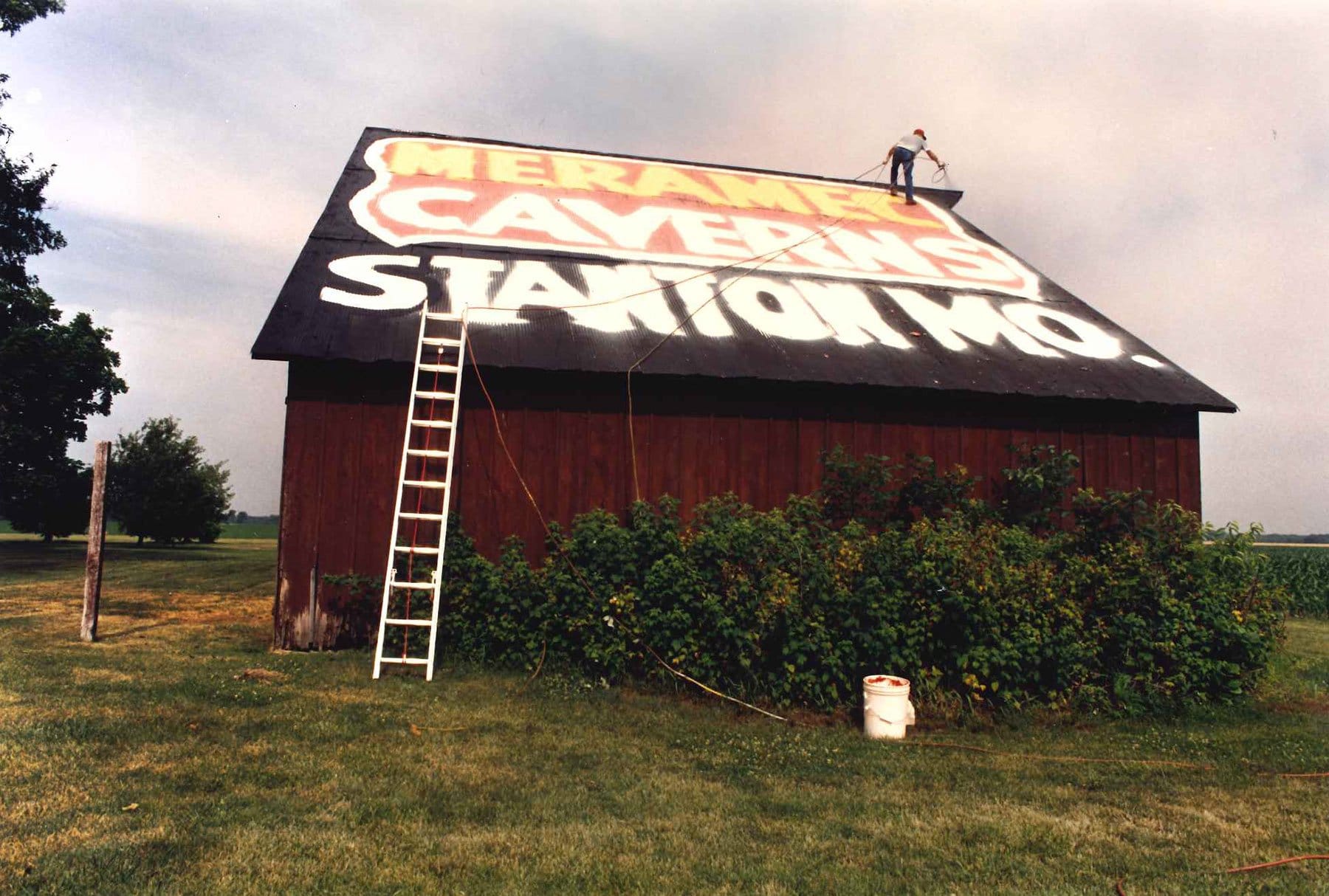
After the discovery of 1941 and the addition of an opened lower level room in 1947, uncovering miles of new passages and spectacular views, Meramec Caverns was complete. Meramec Caverns soon became known far and wide through signs plastered along the roads to attract tourists to the Caverns. Advertisements for the Caverns were also painted on barns in 14 states. Dill also pioneered the use of bumper stickers, then called bumper signs because the vinyl and adhesive used to attach stickers to cars had not yet been developed. While visitors toured the cave, Dill would have "bumper sign boys" tie the Meramec Caverns bumper signs on their cars giving him free advertising and visitors a free souvenir.
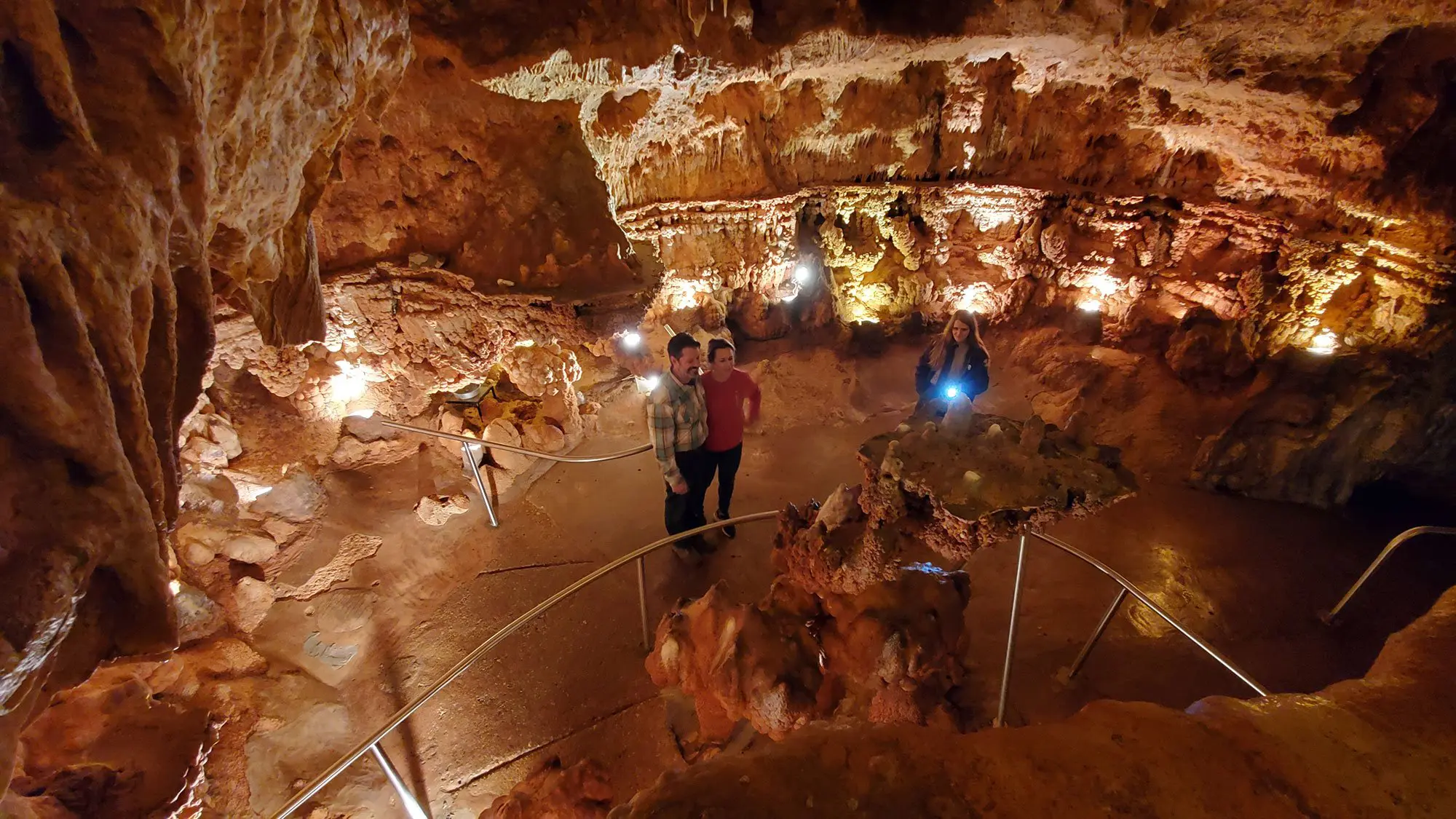
Today, all seven levels have been transformed over the years by continued mineral deposits from water creating the unbelievable and remarkably impressive underground world young and old enjoy to this day. The legacy of Mr. Dill's dream and promotional strategies have inspired generations that have followed, making Meramec Caverns... Missouri's Buried Treasure.
